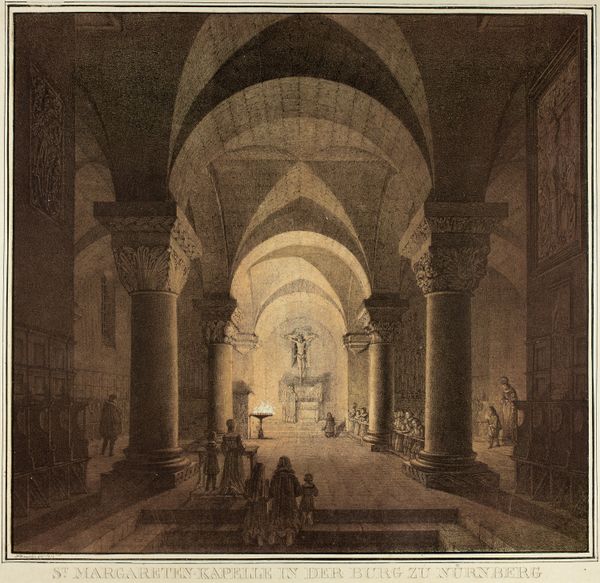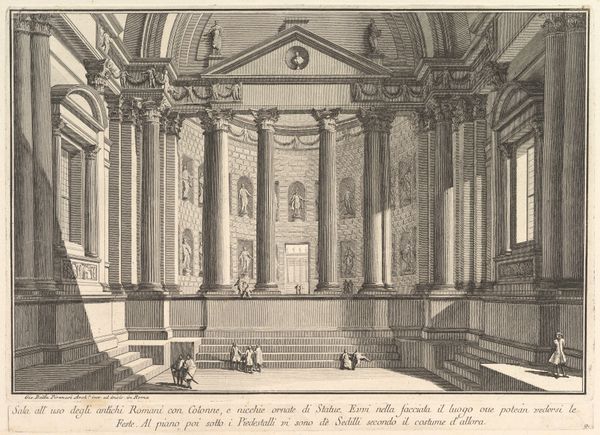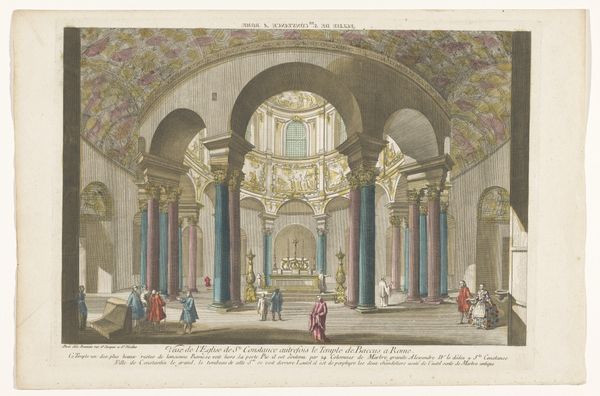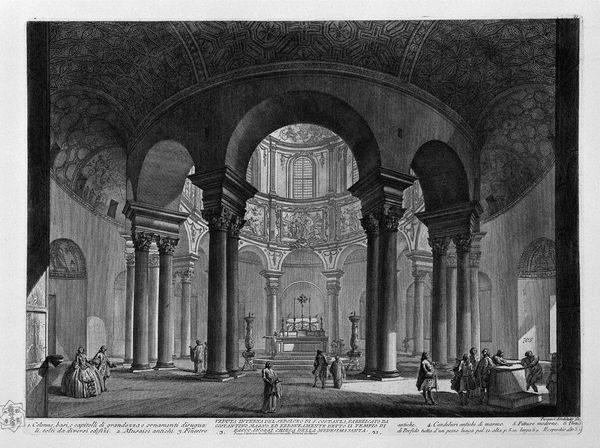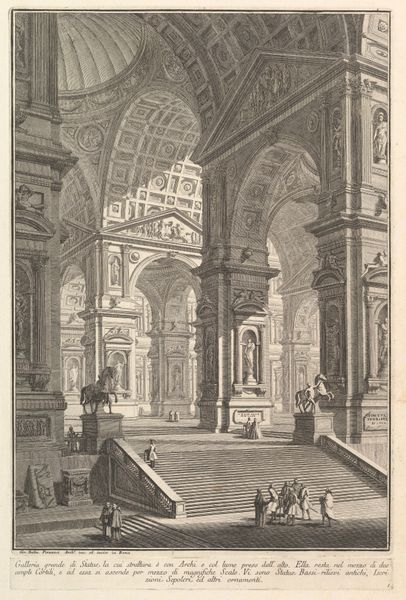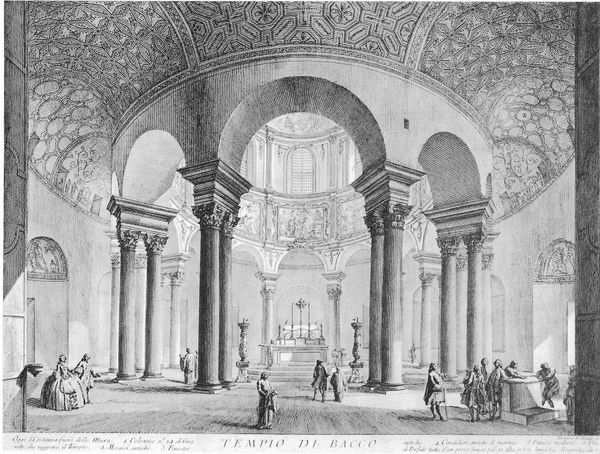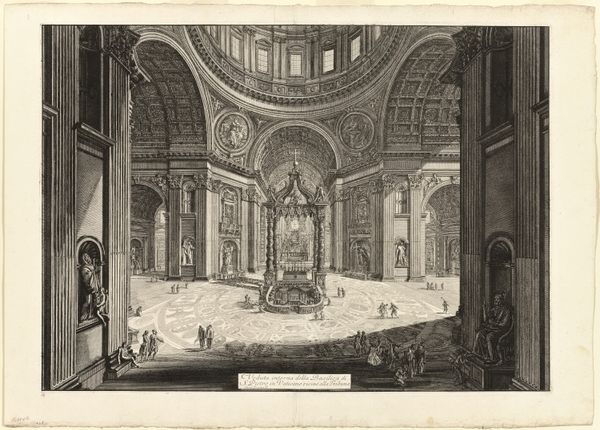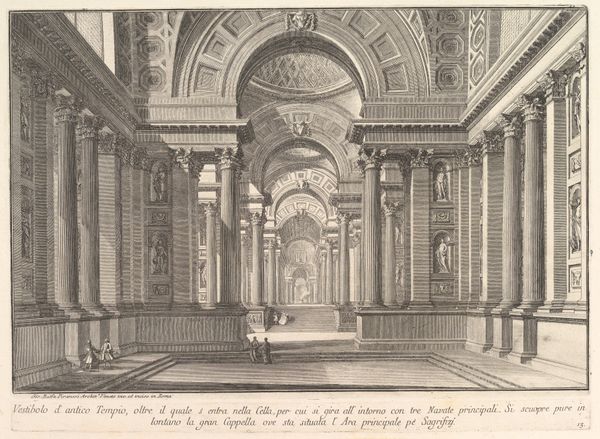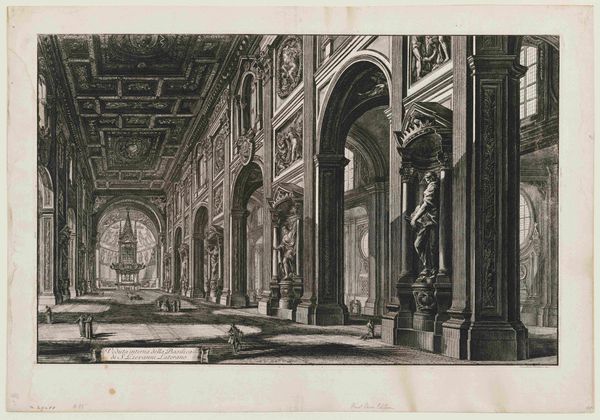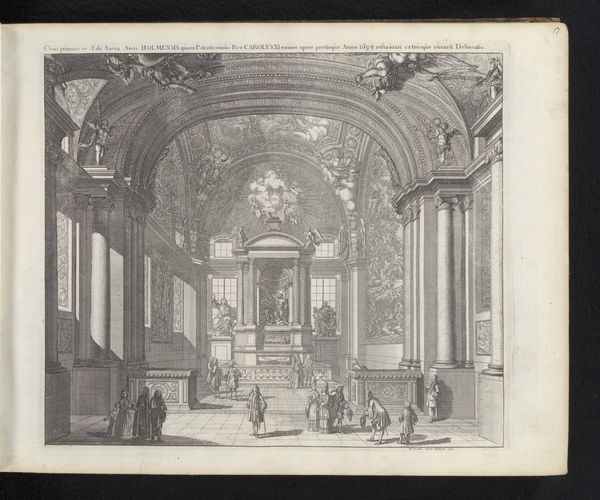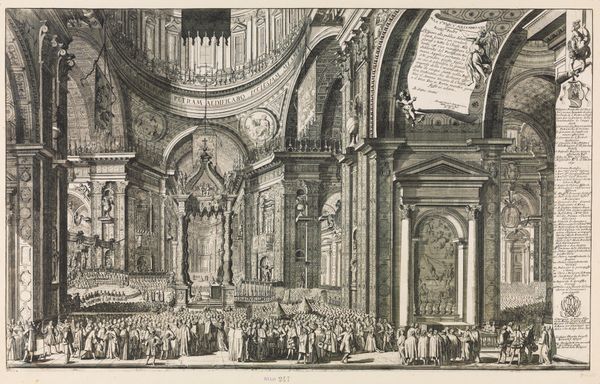
S. Constanza (erroneously callled Temple of Bacchus) (Veduta interna del Sepolcro di S. Constanza, fabbricato da Costantino Magno, ed erroneamente detto il Tempio di Bacco, inoggi Chiesa della medisme Santa) 1751 - 1761
0:00
0:00
drawing, print, engraving, architecture
#
drawing
#
baroque
# print
#
old engraving style
#
column
#
arch
#
cityscape
#
engraving
#
architecture
Copyright: Public Domain
Editor: We’re looking at Giovanni Battista Piranesi’s “S. Constanza (erroneously called Temple of Bacchus)” from between 1751 and 1761, currently at the Metropolitan Museum of Art. It’s an engraving, and the level of detail is astonishing! What strikes me is the way Piranesi uses lines to create such depth. How do you interpret this work? Curator: The success of this print resides significantly in Piranesi's masterful manipulation of line. Observe the variation in the line weights. Notice how the thicker lines articulate the structural components - the columns, arches, and the dome - thereby lending the image architectural solidity. Then contrast this with the finer, more delicate lines that create texture, light, and shadow. Do you see how the artist uses hatching and cross-hatching techniques, especially in the dome, to create the illusion of spatial depth and material density? Editor: Yes, now that you point it out, I can definitely see the variation and its effect on the overall composition. The lines give such dimension! Curator: Precisely. This creates a compelling contrast, enriching the overall viewing experience and conveying the sense of awe associated with the grand interior space. In essence, the structure functions almost as a skeleton onto which the artist drapes the finer elements of surface and atmosphere. Editor: That's fascinating! I never thought of engraving in terms of "draping," but it’s helpful for understanding how everything fits together. Curator: Reflecting upon the interplay of architectural elements and their intricate execution, the artistry invites you into its grand construction, illustrating its very bones, its structure. Editor: Thank you for making me appreciate the work's technical components and understand the structural intent!
Comments
No comments
Be the first to comment and join the conversation on the ultimate creative platform.
